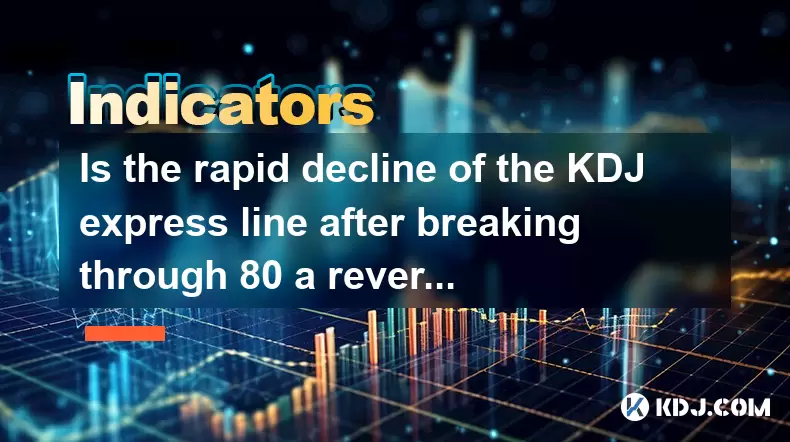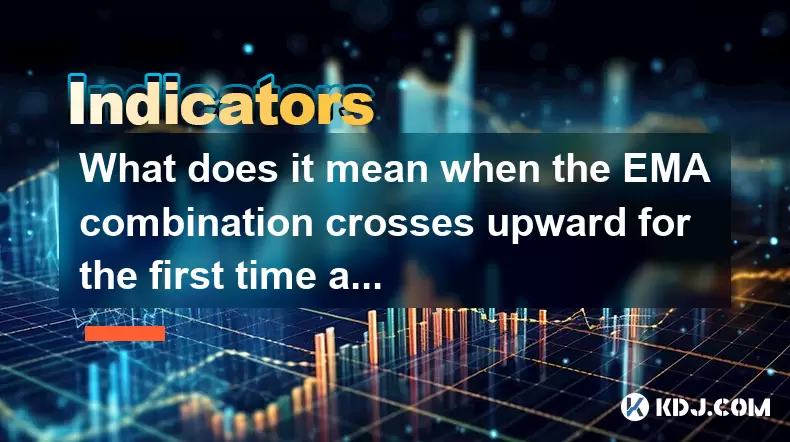-
 Bitcoin
Bitcoin $118600
0.36% -
 Ethereum
Ethereum $3855
1.06% -
 XRP
XRP $3.195
-0.09% -
 Tether USDt
Tether USDt $1.000
-0.04% -
 BNB
BNB $844.5
6.23% -
 Solana
Solana $191.3
2.83% -
 USDC
USDC $0.9997
-0.01% -
 Dogecoin
Dogecoin $0.2376
0.10% -
 TRON
TRON $0.3242
0.83% -
 Cardano
Cardano $0.8222
0.13% -
 Hyperliquid
Hyperliquid $45.26
6.53% -
 Sui
Sui $4.200
-2.56% -
 Stellar
Stellar $0.4336
-1.24% -
 Chainlink
Chainlink $18.86
0.28% -
 Hedera
Hedera $0.2796
-1.75% -
 Bitcoin Cash
Bitcoin Cash $583.3
-1.84% -
 Avalanche
Avalanche $27.06
8.09% -
 Litecoin
Litecoin $112.3
-1.16% -
 Toncoin
Toncoin $3.353
0.58% -
 UNUS SED LEO
UNUS SED LEO $8.968
-0.11% -
 Shiba Inu
Shiba Inu $0.00001395
-0.54% -
 Ethena USDe
Ethena USDe $1.001
-0.03% -
 Uniswap
Uniswap $10.76
0.69% -
 Polkadot
Polkadot $4.175
0.26% -
 Monero
Monero $326.7
1.07% -
 Bitget Token
Bitget Token $4.665
1.61% -
 Dai
Dai $0.9998
-0.02% -
 Pepe
Pepe $0.00001271
0.32% -
 Cronos
Cronos $0.1416
2.01% -
 Aave
Aave $299.3
1.15%
Is the rapid decline of the KDJ express line after breaking through 80 a reversal signal?
When the KDJ's J line spikes above 80 and rapidly drops, it may signal a bearish reversal, especially if confirmed by bearish divergence, falling volume, and price resistance.
Jul 28, 2025 at 04:42 am

Understanding the KDJ Indicator and Its Components
The KDJ indicator is a momentum oscillator widely used in cryptocurrency trading to identify overbought and oversold conditions. It consists of three lines: the %K line (fast stochastic), the %D line (slow stochastic), and the J line (express line). The J line is derived from a formula that amplifies the divergence between %K and %D, making it more sensitive to price changes. Because of this sensitivity, the J line often reacts faster than the other two, providing early signals for potential trend shifts. When the J line crosses above 80, it typically indicates an overbought condition, suggesting that the asset may be due for a pullback. However, the behavior of the J line immediately after such a breakout is critical in determining whether the trend will continue or reverse.
Interpreting J Line Behavior After Breaking 80
When the J line rapidly declines after surpassing 80, traders often interpret this as a possible bearish reversal signal. This sharp drop suggests that buying momentum is weakening quickly, even though the price may still be rising. The rapid decline reflects a loss of upward acceleration, which can precede a price correction. In the context of cryptocurrency markets, where volatility is high and sentiment shifts quickly, such a signal can be especially significant. However, it's essential to confirm this signal with other technical tools. For instance, if the J line drops below 80 and continues toward 50, especially while the price fails to make new highs, it strengthens the case for a reversal. Traders should also monitor whether the %K and %D lines follow the J line downward, as confluence among all three increases the reliability of the signal.
Conditions That Strengthen the Reversal Signal
Not every rapid drop of the J line after 80 leads to a reversal. Several conditions must be met for the signal to carry more weight:
- The J line reaches extreme levels above 100 before falling, indicating excessive bullishness that is unsustainable.
- The decline in the J line is accompanied by decreasing trading volume, suggesting weakening participation in the uptrend.
- There is a bearish divergence on the price chart, where the price makes a higher high but the J line makes a lower high.
- The %K and %D lines begin to cross downward shortly after the J line falls, confirming momentum shift.
These factors, when present together, increase the probability that the rapid J line drop is not just a temporary pullback but the beginning of a broader trend reversal. In fast-moving crypto markets like Bitcoin or Ethereum, such setups often occur after FOMO-driven rallies and can precede sharp corrections.
Practical Steps to Confirm and Trade the Signal
To effectively use the rapid J line decline after 80 as a trading signal, follow these steps:
- Open a charting platform such as TradingView or Binance’s built-in chart tool.
- Apply the KDJ indicator to the price chart of the cryptocurrency you're analyzing.
- Set the default parameters (usually 9,3,3) unless you have a tested alternative configuration.
- Wait for the J line to rise above 80, preferably exceeding 100 for stronger signals.
- Monitor for a sharp drop in the J line, ideally falling below 80 within a few candlesticks.
- Check for bearish divergence by comparing recent price highs with corresponding J line peaks.
- Look at volume trends—a drop in volume during the price rise adds credibility to the reversal signal.
- Confirm with candlestick patterns such as bearish engulfing, shooting star, or dark cloud cover.
- Consider resistance levels—if the price is near a known resistance zone, the reversal signal gains strength.
- Use stop-loss orders above the recent swing high to manage risk if entering a short position.
This methodical approach ensures that the signal is not acted upon in isolation, reducing false positives in volatile crypto environments.
Common Misinterpretations and Risk Management
A frequent mistake is treating every J line drop after 80 as a reversal signal without context. In strong bullish trends, the J line can remain above 80 for extended periods or bounce back quickly, leading to failed short trades. Moreover, in low-liquidity altcoins, erratic J line movements are common due to price manipulation or thin order books. To mitigate risk:
- Avoid trading the signal during major news events or macroeconomic announcements that can override technical patterns.
- Combine the KDJ analysis with moving averages—for example, a price trading below the 50-period EMA adds bearish confirmation.
- Use support and resistance zones to determine optimal entry and exit points.
- Never rely solely on the J line; integrate it with RSI, MACD, or volume profile for multi-indicator confirmation.
Risk management is especially crucial in cryptocurrency trading, where leverage and volatility can amplify losses. Position sizing, stop placement, and portfolio diversification help preserve capital when signals turn out to be premature.
Frequently Asked Questions
Can the J line staying above 80 for a long time invalidate the reversal signal?
Yes. If the J line remains elevated above 80 without a sharp decline, it indicates sustained bullish momentum. In trending markets, especially during bull runs, the J line can stay overbought for extended periods. A reversal signal is only valid when the J line shows a rapid and decisive drop, not merely lingering in overbought territory.
Is the KDJ indicator equally effective across all cryptocurrencies?
No. The KDJ works better in assets with consistent volatility and sufficient trading volume, such as Bitcoin or Ethereum. In low-cap altcoins with erratic price action, the J line can generate frequent false signals due to pump-and-dump schemes or low liquidity. Always assess the trading pair’s historical behavior before relying on KDJ signals.
How does the time frame affect the reliability of the J line reversal signal?
Higher time frames like 4-hour or daily charts provide more reliable signals than 5-minute or 15-minute charts. On shorter time frames, the J line can whipsaw due to noise, leading to premature entries. For stronger confirmation, align the signal across multiple time frames—for example, a J line drop on both the 4-hour and daily charts increases validity.
Should traders use the KDJ indicator alone or with other tools?
The KDJ should not be used in isolation. It performs best when combined with price action analysis, volume indicators, and trend-following tools like moving averages. Using multiple confluences reduces the risk of acting on false signals, which are common in the fast-paced crypto market.
Disclaimer:info@kdj.com
The information provided is not trading advice. kdj.com does not assume any responsibility for any investments made based on the information provided in this article. Cryptocurrencies are highly volatile and it is highly recommended that you invest with caution after thorough research!
If you believe that the content used on this website infringes your copyright, please contact us immediately (info@kdj.com) and we will delete it promptly.
- Elon Musk, SpaceX, and Bitcoin: A $153 Million Mystery
- 2025-07-28 22:30:12
- Ozak AI: Is This Crypto Gem Primed for a 2025 Takeoff?
- 2025-07-28 22:30:12
- Anchorage Digital & Ethena Labs: Ushering in a New Era of Stablecoins with GENIUS Compliance
- 2025-07-28 20:50:13
- Altcoins Soar, Bitcoin Stumbles: Decoding the Crypto Inflows Shift
- 2025-07-28 20:50:13
- XRP, Pi Coin, Ethereum: Decoding the Latest Crypto Trends
- 2025-07-28 21:30:12
- Meme Coin Mania: SPX6900's Surge and TOKEN6900's Potential Explosion
- 2025-07-28 21:30:12
Related knowledge

What does it mean when the EMA combination crosses upward for the first time after sideways trading?
Jul 28,2025 at 03:43pm
Understanding the EMA and Its Role in Technical AnalysisThe Exponential Moving Average (EMA) is a widely used technical indicator in cryptocurrency tr...

What signal does the ROC send when it rises rapidly from a low level and breaks through the zero axis?
Jul 27,2025 at 10:15am
Understanding the Rate of Change (ROC) IndicatorThe Rate of Change (ROC) is a momentum-based oscillator used in technical analysis to measure the perc...

What does it mean when the price breaks through the double bottom neckline and the moving averages are arranged in a bullish pattern?
Jul 28,2025 at 10:57am
Understanding the Double Bottom PatternThe double bottom is a widely recognized reversal chart pattern in technical analysis, particularly within the ...

What signal does the DMA fast line cross the slow line above the zero axis?
Jul 28,2025 at 05:42am
Understanding the DMA Indicator and Its ComponentsThe DMA (Difference of Moving Averages) indicator is a technical analysis tool used in cryptocurrenc...

What does it mean that the rebound is blocked after the moving average is arranged in a short position for the first time?
Jul 26,2025 at 10:51am
Understanding the Short-Term Moving Average ConfigurationWhen traders refer to a 'short position arrangement' in moving averages, they are describing ...

What does it mean that the ZIGZAG low point is raised and the high point breaks through the previous peak?
Jul 28,2025 at 03:28am
Understanding the ZIGZAG Indicator in Cryptocurrency TradingThe ZIGZAG indicator is a technical analysis tool widely used in cryptocurrency trading to...

What does it mean when the EMA combination crosses upward for the first time after sideways trading?
Jul 28,2025 at 03:43pm
Understanding the EMA and Its Role in Technical AnalysisThe Exponential Moving Average (EMA) is a widely used technical indicator in cryptocurrency tr...

What signal does the ROC send when it rises rapidly from a low level and breaks through the zero axis?
Jul 27,2025 at 10:15am
Understanding the Rate of Change (ROC) IndicatorThe Rate of Change (ROC) is a momentum-based oscillator used in technical analysis to measure the perc...

What does it mean when the price breaks through the double bottom neckline and the moving averages are arranged in a bullish pattern?
Jul 28,2025 at 10:57am
Understanding the Double Bottom PatternThe double bottom is a widely recognized reversal chart pattern in technical analysis, particularly within the ...

What signal does the DMA fast line cross the slow line above the zero axis?
Jul 28,2025 at 05:42am
Understanding the DMA Indicator and Its ComponentsThe DMA (Difference of Moving Averages) indicator is a technical analysis tool used in cryptocurrenc...

What does it mean that the rebound is blocked after the moving average is arranged in a short position for the first time?
Jul 26,2025 at 10:51am
Understanding the Short-Term Moving Average ConfigurationWhen traders refer to a 'short position arrangement' in moving averages, they are describing ...

What does it mean that the ZIGZAG low point is raised and the high point breaks through the previous peak?
Jul 28,2025 at 03:28am
Understanding the ZIGZAG Indicator in Cryptocurrency TradingThe ZIGZAG indicator is a technical analysis tool widely used in cryptocurrency trading to...
See all articles

























































































